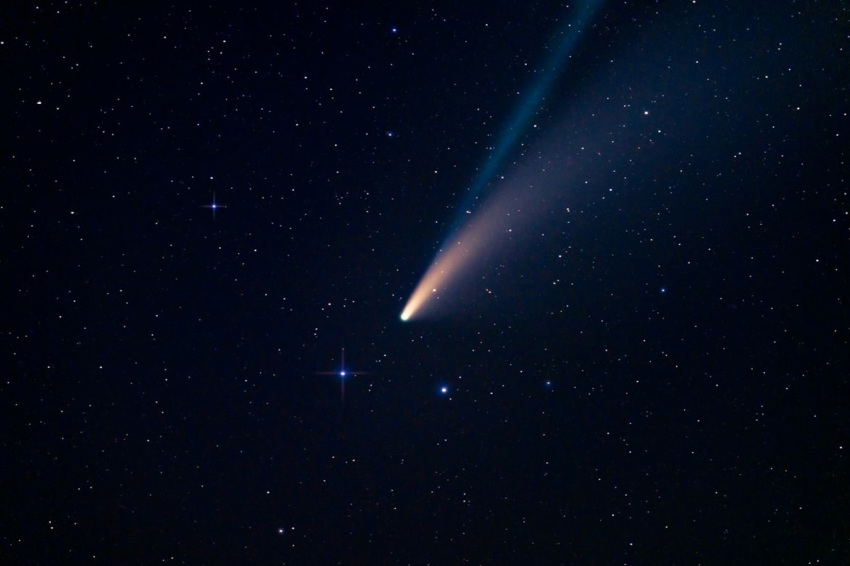'Christmas Comet': There's still time to see Comet Leonard before it leaves solar system
A rare sighting of a comet in the night sky before Christmas Day

Astronomers have confirmed that stargazers will be able to see a comet pass across the sky two days before Christmas and on Christmas Day before it leaves the solar system.
Comet C/2021 A1, also known as Comet Leonard, passed by Earth on Dec. 12 and is expected to be visible in the Southwestern sky closer to sunset on the night of Dec. 23, as it gets close to Venus. On Christmas Day, the comet will be visible from the Southern Hemisphere, according to Star Walk.
Comet Leonard, which astronomers said will likely never be seen in our solar system again, traveled so close to Venus on Thursday night that its discoverer described it as a "cosmic close call," CBN News reported.
IFLScience reported that Comet Leonard could possibly cause a meteor shower on the second innermost planet that would be visible from Earth. Astronomers also said Leonard will make history as the comet to make the closest pass by Venus.
"There is a small chance Venus will pass close enough to the comet's path where it may pick up some dust grains in its atmosphere, producing a meteor shower on our neighboring planet," explained Gregory Leonard, who is a senior research specialist at the University of Arizona Lunar and Planetary Laboratory, and the discoverer of the comet.
Leonard told A News that on Jan. 3, 2021, he had been observing the sky in search of near-Earth asteroids and that is when he discovered the comet's tail for the first time. Following his sighting at Mount Lemmon Observatory, Leonard immediately knew what he had witnessed for the first time and the comet was later named after him.
Comet Leonard is traveling at a rapid speed of 43 miles per second, which causes it to take a different position each day that can be observed from Earth, according to Star Walk.
Confirming that Dec. 12 was the comet’s closest pass to our planet, IFLScience said the comet flew 34.9 million kilometers (21.7 million miles) from Earth on that day.
Leonard told A News that those who view the comet should look for an effect called forward scattering.
Forward scattering is when a comet draws nearer to the sun, and its tail and "coma" — a cloud of dust and gas — might scatter, potentially causing the comet to appear brighter.
"I feel there is going to be something to be seen even for the casual observer," Leonard told A News. "Find yourself a dark sky with a good view of the horizon, bring binoculars and I think you may be rewarded."
"When the tug-of-war is won by the gravity of our solar system, an object may start moving inwards, accelerating as it gets closer to the Sun,” Leonard told Forbes magazine.
“This is the last time we are going to see the comet,” Leonard added. “After its slingshot around the sun it will be ejected from our solar system."
Although Comet Leonard has been seen with the naked eye, on Christmas Day, the comet will likely not be able to be seen without a pair of binoculars, according to Star Walk.
To view Comet Leonard's location in the sky, download Star Walk's stargazing apps.



























